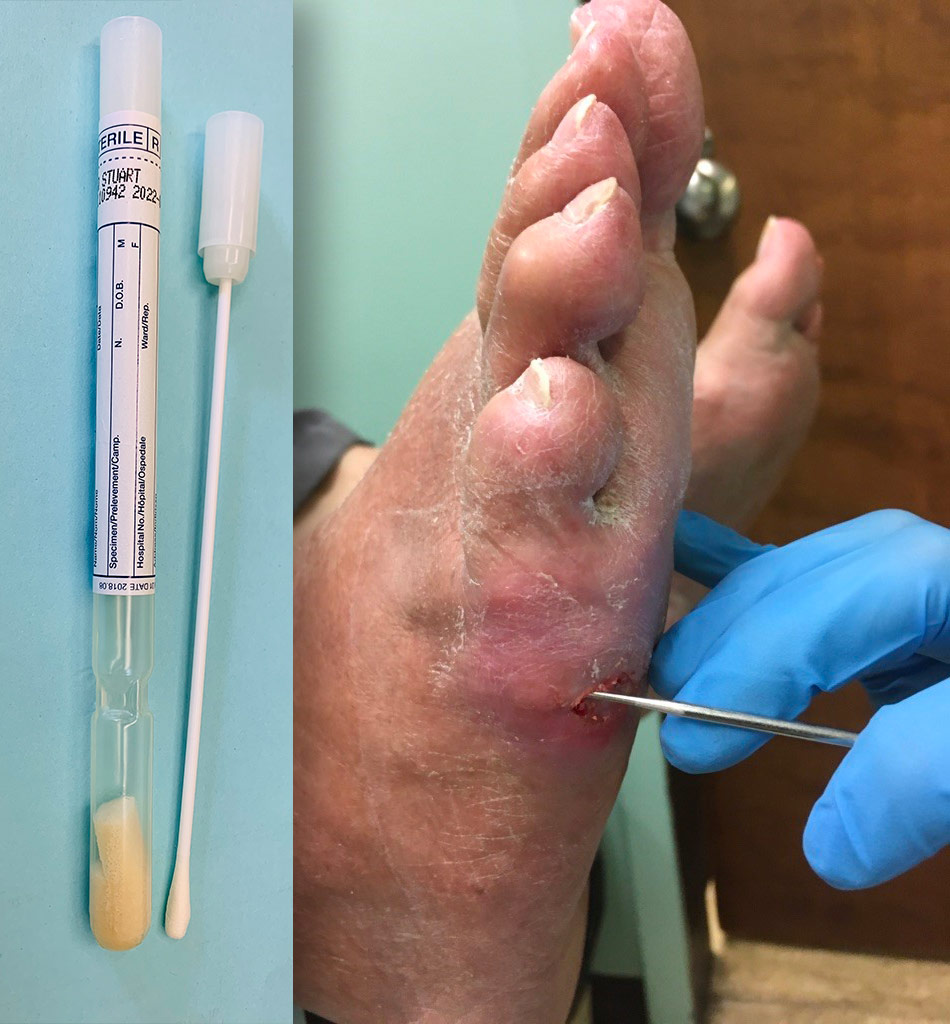Examinations and tests
Several examinations and tests are available. Your health professional will decide which tests are necessary after discussing your needs with you. The health professionals will examine your feet, ask you questions and analyze your medical file.
Why is a physical exam conducted during an in-clinic visit?
A basic physical examination is usually done during a visit to the clinic. This examination includes a general inspection of your feet during which several things are looked at, including the health of the skin on your feet. In medical terms, this is called “skin integrity.” The health professional checks whether:
- the skin is warm, supple, and sufficiently hydrated;
- there are any areas of thickened skin;
- there are any bone deformities or other abnormalities, such as bunions or hammertoes.
What tests are used to detect problems?
There are several tests that can be used to detect or confirm if you have any problems affecting your feet, including:
- blood tests, used to detect the presence of an infection and to assess its severity, among other things;
- blood glucose tests, which measure the level of sugar in your blood. Controlling your blood sugar levels can help heal wounds and protect against infection;
- X-rays, which provide an image of the bones and the inside of your foot.
What examinations are done if you have a wound on your foot?
If you have a wound on your foot, the health professional will measure how deep it is using a sterile instrument that does not cause pain. Measuring the depth of the wound shows whether it has reached the bone. If so, it may mean there is an infection and that treatment will be necessary.

A sample will then be taken from the bottom of the wound. Called a “culture”, this sample is used to identify the bacteria that are causing the infection, which then allows the health professional to prescribe the right antibiotic.
If necessary, the following additional tests may be performed:
- an X-ray to check for bone damage from the infection;
- magnetic resonance imaging (MRI) or other specialized nuclear medicine;
- tests that can help the health professional confirm the diagnosis.
How is blood circulation in the feet assessed?
Good blood circulation in the feet keeps the muscles, tendons, bones and skin healthy. That’s because blood carries the nutrients your feet need to function properly. If you have a wound or infection, blood delivers the oxygen and antibiotics that will help you heal. Good circulation makes it easier for you to get around and go about your daily activities.
Detailed vascular tests will be conducted based on the clinical assessment. We invite you to consult the separate module focusing on peripheral arterial disease (PAD).